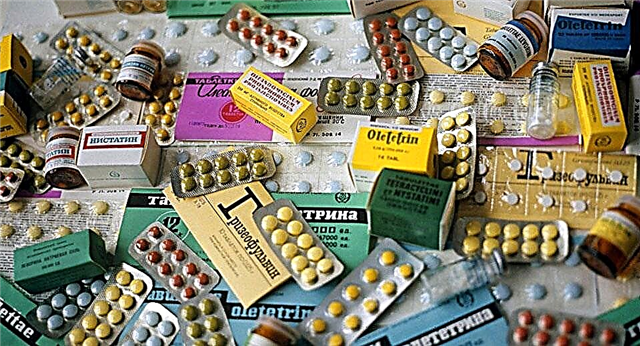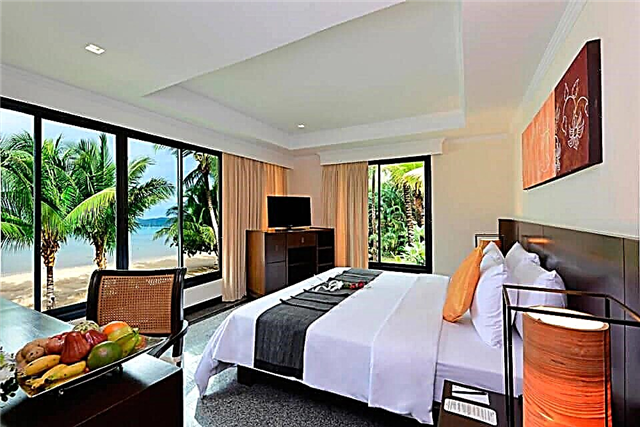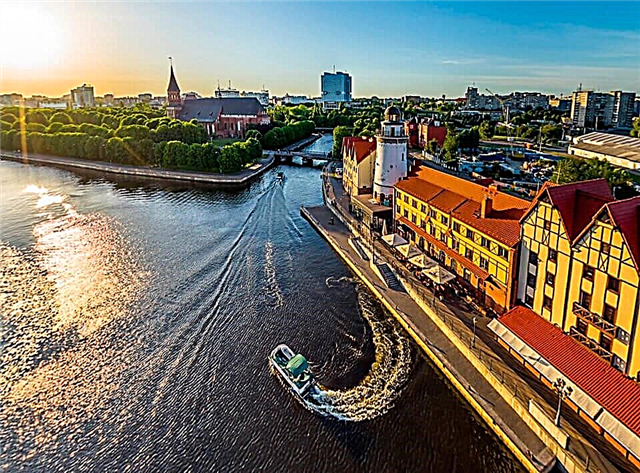Every traveler dreams of seeing the beautiful Prague. Exquisite architectural monuments of different times and styles create an atmosphere of eternal antiquities in the city, filled with mysterious life even now. Many, for example, the Royal Palace, St. Vitus Cathedral, the old Prague Castle, have become symbols of the country. Among them is one of the earliest Christian buildings in the Czech Republic, the famous Strahov Monastery, which grew up in Hradcany, thanks to the activities of the Order of Premonstrant Monks.
Only endless forests with yellow sandy landslides, guarded by guards protecting the castle mound on the Prague Hill, were here until 1140. On the initiative of Bishop Jindrich Zdik and the decision of Vladislav II, the construction of the complex began, which lasted until 1143. Along with the main building, numerous buildings appeared, beautiful vineyards, blooming gardens that covered a huge territory.
History

The white robes of the silent monks of the active monastery remind of life outside its walls for many centuries. The huge complex of buildings was rebuilt several times. Its buildings have witnessed many historical storms of the Middle Ages. The wars of the Hussites, the invasion of the French, the storming of Prague by the troops of Prussia and many other troubles swept over the territory of the monastery. Its first Romanesque stone building was completely burnt down in 1258 due to the carelessness of a sleeping monk who did not follow the burning candle. Gothic buildings were erected on this site.

In the 17th century, the architect Lurago presented a project for a new baroque monastery. It was built between 1742 and 1758. And it was once again defeated by French troops. The restored monastery continued its activities, determined by the strict laws of the Premonstrant Order. Hardworking monks worked hard, conducted services, prayers, collected paintings, books, rare geographical maps, filling the museum of the monastery with exhibits. They planted rich vineyards, a beautiful garden in the vast areas surrounding all the buildings.
A difficult period for the order was the end of the 18th century, when Emperor Joseph II issued an order to liquidate useless monasteries. The salvation of the monastery was the creation of a library for visiting the general public. Books, paintings, from the closed monasteries, moved to local depositories. In the 20th century, the opportunity arose to create a famous art gallery of the complex. Today the complex is considered at the same time a religious center, a museum, an old library of the Czech Republic. The remains of its creator, Norbert of Xanten, are considered the main shrine kept in the Gothic Church of the Assumption of the Virgin Mary.
Description

Even in ancient times, when in old Prague most buildings were one-story, the architectural buildings of the monastery consisted of several floors. The famous Strahov Gardens, founded in the 17th century, stretch along their southern and eastern sides. You can see him on the observation deck, located above the terraces with a vineyard. The site was designed by Charles Coose in 1991.
Blooming hedges, cozy seating benches and the snow-white statue of Our Lady in Exile attract tourists to the site, which offers wonderful views of Prague. The statue is a copy of Jan Bendl's work on the Old Town Square. During the years of the establishment of independence of the Czech Republic in 1918, after the demolition of the Mariana Pillar, it was destroyed. The Mother of God, adorned with a starry wreath, a golden letter "The Mother of God in exile prays for you," froze at the defeated dragon.

Most of the monastery buildings in the garden were created after the end of the Thirty Years' War. Among them are a confessional, a special room for drying fruits (the gardener's house), the caves of Hell in a multi-meter layer of the hill, which have become outbuildings. The decoration of the monastery courtyard is a stone pillar with a statue of St. Norbert at the top. Nearby is the Church of the Ascension.
Just below the monastery building, near the dam, there is a green tent of a century-old ash tree, one of the largest in the country. Its crown covers about 40 m. The age of the tree, which grows in the form of three powerful branches, is 200 years old. Under it you can see an old sewer pond. The Strahov Monastery complex consists of the Museum of National Literature, Miniatures, the Art Gallery, the old Library.
Sights
The monastery complex has long become a place of pilgrimage to an ancient architectural monument. Here one gets acquainted with the peculiarities of the life of the monks of the order, the acceptance of their spirit of renunciation of personal wealth. The use of literary, artistic masterpieces, collected by ministers, enriches the souls of people, maintains a respect for the historical values of the country. The following places are considered the main attractions of the complex:
Strahov library

In one of the voluminous, beautiful libraries of Europe, which has existed for 8 centuries, there are over 130 thousand books, 25,000 old manuscripts, a music collection, an ancient book called the Strahov Gospel, published in the 9th century. The library's archive was formed on the basis of purchasing books abroad, at the expense of wills by individual owners and other monasteries. In 1824, the library, almost by accident, found the manuscript of the lost ancient original of the chronicle of Abbot Jarloch. It contained the first indication of the Strahov Monastery. One of the doctors was packing bottles of medicine into parchment sheets of an old book.
Here and today, during the service, you can hear the magical sounds of the organ, on which in the distant 1787 the famous Mozart amazed those around him with the art of improvisation. Thanks to the monk, who had a special memory and recorded the melody he heard, the work became a real relic of the monastery, adding to the list of the composer's masterpieces.

A separate building was erected for the library. It housed the Theological and Philosophical Halls, which became famous far beyond the borders of the country. Here you can see the first editions of the works of philosophers and theologians of Europe, which are still of scientific value. The second building of the library burned down in 1420 during the war with the Hussites. The values of the restored library were brutally plundered by the Swedes in 1648. The monks managed to hide most of the library, but 19 boxes with the monastic heritage were taken from the country to Stockholm.
The main buildings of the Strahov Monastery were built in the 17th and 18th centuries. During this period, the library fund was constantly increasing and required the allocation of separate rooms and halls. The famous Theological Hall was designed by Giovanni Domenico Orsi in 1579. The cylindrical ceiling with baroque stucco decorations houses a rare collection of Bible literature in many languages.
Among them are the works of famous printers, for example, Christoffel Plantin. The hall's valuable exhibits include geographical and astronomical maps of the 17th century and the famous ceiling frescoes. They depict paintings related to the profession of a librarian. The painting and decoration of the hall are the creations of Frantisek Christian Nosecki.

A century later, the Philosophical Hall was born in the monastery complex, equipped to store the valuable heritage of books brought from the closed monasteries of Moravia, Louki. In the high hall, beautiful carved walnut shelves were installed, made after the end of the Thirty Years War. The high ceiling of the hall attracts attention with the painting on the theme "History of Humanity", created by the Austrian artist Františk Maulbertsch in 1794.Now the fresco is called the pride of the monastery.
The library contains an interesting Cabinet of Curiosities (by analogy with the Kunstkamera). Along with rare natural exhibits, there are the remains of the Dront bird. The collection of natural anomalies was acquired from the legacy of Baron Jan Eben in 1798. It also contains archaeological finds, dishes, weapons, models of old warships.
Brewery

On the left side, at the entrance to the monastery, sit a small pub "Strahov Monastery brewery", which offers original varieties of local beer. The technology of making a tasty, high-quality drink has been mastered by monks since the 13th century. In the Middle Ages, beer was brewed with a high calorie content and allowed monks to sustain long fasts. The famous St. Norbert beer was first brewed in this brewery. This drink can be purchased as a souvenir of the brewery's living history spanning four centuries.
There is a small restaurant “Klasterni pivovar Strahov” on the territory of the complex. In a simple, cozy atmosphere, you can enjoy the taste of not only the famous beer, but also traditional snacks and a full lunch. The average price for a glass of beer is 60 CZK, the boar knee dish costs about 330 CZK.
Church of the Assumption of the Virgin Mary

An unforgettable feeling is received by people sitting on ancient carved benches, admiring the gilded stucco molding, amazing paintings of altarpieces. Plunging into the magical sound of the organ touched by Mozart's hands. Listening to the melodies of the Gregorian chant under the arches of a beautiful historical monument. The architectural masterpiece dedicated to St. Norbert was originally a type of Romanesque basilica. It acquired a Gothic look after the fire of 1258.
Two centuries after the defeat by the Hussites, the church was restored in the Renaissance style, and after the attack of the French in 1742, the Baroque style became the main type of building. Frescoes depicting scenes from the life of the Virgin Mary, St. Norbert appeared in 1774 thanks to the works of Neungertz. The history of the church is closely connected with all the events in the life of the monastery.
Art Gallery
Hardworking, intelligent monks knew how to value and cherish books and works of art, creating rich, interesting collections. Beginning in the 18th century, the first collection of paintings appeared in the monastery. By 1834, their number had reached about 500. From that moment on, a period of ordering values began, the creation of a catalog. The important process was led by Abbot Jerome Seidler. In 1870, the number of paintings increased dramatically, and a unique art gallery (Strahovská obrazárna) was born, proud of the presence of the best works of the XIV-XIX centuries.
Nowadays, many works are on permanent display. The gallery often hosts interesting thematic exhibitions. The wealth of art by European masters from the Renaissance and Gothic period is housed in the gallery surrounding the monastery courtyard. Among them are elements of liturgical vestments, items from different centuries.
Church of St. Roch

The Gothic building adorns the northern part of the courtyard of the Strahov Monastery. It was built in 1603-1612 according to a project created by the architect Giovanni Mario Filippi. As a gratitude to the saint for saving him from the plague, Emperor Rudolph II allocated money for the construction of the church.
On the squares of the complex there is a Museum of Miniatures, where interesting exhibits can be viewed with a magnifying glass. Monument of national writing in the form of a museum (Památník národního písemnictví), opened in 1953. Now its base is considered to be a rare Literary Archive containing about 6 million original documents, newspaper clippings, photographs, manuscripts, and drafts.
Opening hours and ticket prices
The monastery complex is open to the public every day except Monday and Sunday from 9 am to 5 pm. To get acquainted with all the sights of the monastery, you need to buy four tickets (library, gallery, museums of miniatures, monastery). The ticket price is 300 CZK.
Where is it located and how to get there
The easiest way to get to the monastery is by trams 22, 23 to the Pohořelec stop. Prague landmark address: Strahovske nadvori 1, Prague 1.











